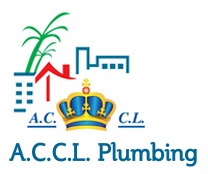The plumbing industry is embracing augmented reality (AR) and virtual reality (VR) technologies to enhance training, improve efficiency, and provide remote support. These innovative tools are transforming the way plumbers learn, work, and interact with clients.
Benefits of AR and VR in Plumbing
– Improved Training: AR and VR simulations offer hands-on experience in a risk-free environment, allowing plumbers to practice complex tasks and develop muscle memory.
– Increased Efficiency: Virtual training reduces the need for physical equipment and materials, saving time and resources.
– Enhanced Retention: Interactive simulations and real-world scenarios improve knowledge retention and reduce errors.
– Remote Consultations: AR enables plumbers to access critical information, such as instructions and diagrams, in real-time, facilitating remote consultations and troubleshooting.¹ ² ³
Applications of AR and VR in Plumbing
– Virtual Reality Labs: Simulate real-world environments, allowing plumbers to practice pipe fitting, soldering, and other critical skills.
– Simulation-Based Training: Mimics real-world scenarios, enabling plumbers to develop problem-solving skills and troubleshoot complex issues.
– Augmented Reality Training: Overlays virtual information onto real-world environments, providing critical information and guidance during tasks.
Real-World Examples
– ImmerseLearn: Offers VR plumbing training programs with interactive modules, hands-on simulations, and certification exams.
– Interplay Learning: Provides VR training simulations for plumbing and HVAC apprentices, accessible via VR headsets or mobile devices.
– VR Plumbing Simulator: Allows plumbers to practice pipe fitting, water system installation, and other crucial skills in a virtual environment.⁴ ⁵
Future of AR and VR in Plumbing
– Increased Adoption: More plumbing companies and training providers are adopting AR and VR technologies to enhance training and improve efficiency.
– Advancements in Technology: Integration with AI and IoT will enable personalized training experiences and real-time access to critical information.
– Cost Savings: Reduced need for physical equipment and materials will lead to cost savings and a more sustainable training process.

